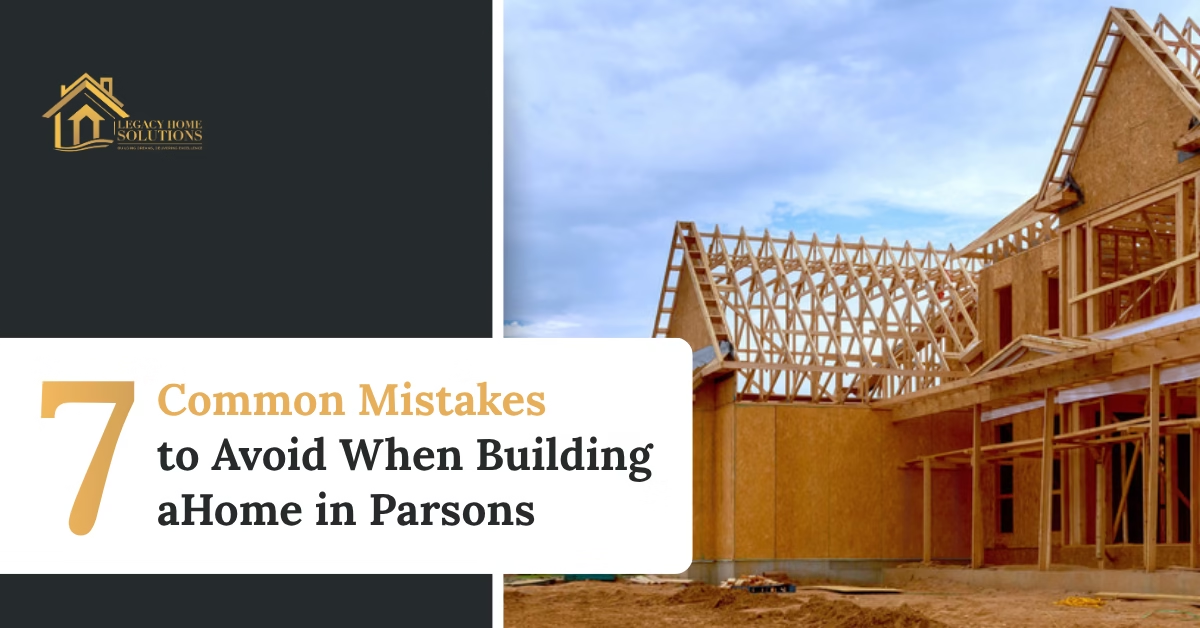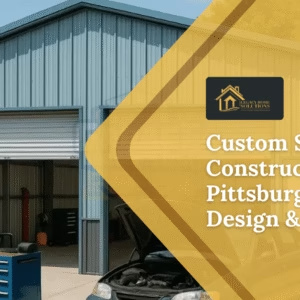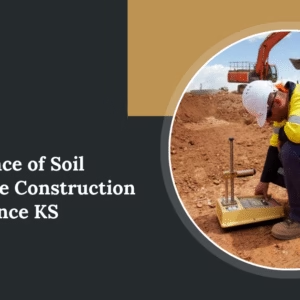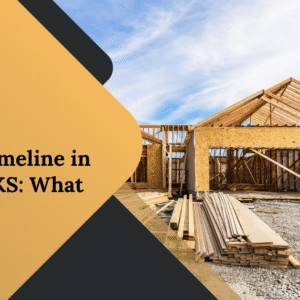A few years ago, a family in Parsons started their dream home project. The design was perfect, the builder seemed reliable, and excitement filled every day. But months later, cracks appeared in the walls, drainage failed, and costs spiraled far beyond their budget. What went wrong? They had unknowingly made several home construction mistakes in Parsons that could have been avoided with the right planning and guidance.
Your home should tell your story, not your mistakes.
Building a home is one of the most emotional and significant investments of your life. Yet, many new homeowners repeat avoidable errors that lead to stress and long-term structural issues. This guide explains the seven most common mistakes people make during the building process and how to prevent them before they cost you more than you expected.
1. Ignoring Soil and Site Preparation
Every great home begins beneath the surface. The land you build on determines how well your foundation will last. Yet, many homeowners in Parsons overlook proper soil testing or rush through the site preparation stage.
Skipping this step often leads to foundation shifting, water pooling, or cracked flooring. The soil in Southeast Kansas varies in density and moisture content, so it must be analyzed before construction begins.
Why It Matters
- Soil testing identifies weak or unstable ground.
- Proper site grading prevents water from seeping under the foundation.
- Good drainage reduces maintenance costs long-term.
Before laying concrete, ensure your builder performs soil testing and grading as part of their home construction services. Without this step, even a well-designed home can face costly repairs later.
2. Not Budgeting for Unexpected Costs
When building a home, most people focus on the big numbers, materials, labor, and design. However, small unplanned expenses often cause the biggest headaches.
Unexpected costs such as permit changes, weather delays, or upgraded finishes can quickly break your budget. A simple adjustment, like relocating plumbing or modifying a wall, can snowball into thousands in extra expenses.
How to Prevent This
- Always set aside a 10 to 15 percent contingency fund.
- Request a detailed breakdown from your builder.
- Ask questions about potential cost variations.
In Parsons, material pricing can fluctuate with the season. By accounting for flexibility, you protect yourself from stress and unfinished projects. Proper budgeting ensures your dream home becomes a finished home.
3. Rushing Design and Layout Decisions
When excitement builds, many homeowners make design decisions too quickly. They focus on aesthetic details like paint colors or flooring while neglecting functionality and flow.
One of the most common home construction mistakes in Parsons involves skipping professional guidance during design. The result? Homes with awkward spaces, poor ventilation, or garages that are too small for modern vehicles.
If you’re also considering garage planning, take extra time to review dimensions, storage needs, and driveway angles. Rushing this process leads to mistakes that cannot easily be changed after construction begins.
Smart Design Habits
- Spend time reviewing floor plans from multiple angles.
- Visit completed projects to visualize real space.
- Balance beauty with practicality in every decision.
A home designed in haste often becomes one you outgrow quickly. Thoughtful planning ensures every square foot serves your lifestyle for years.
4. Choosing the Wrong Builder
Selecting the right builder determines whether your project feels smooth or chaotic. Some homeowners choose contractors based solely on the lowest quote, only to explore hidden fees or poor communication later.
When evaluating builders, focus on reputation, transparency, and local experience. In small towns like Parsons, word-of-mouth recommendations often reveal who delivers quality home construction services and who does not.
Before You Sign a Contract
- Check reviews, past projects, and references.
- Ask about subcontractors and supervision on site.
- Confirm all costs and deadlines in writing.
A reliable builder acts as your partner, not just your contractor. They should listen to your goals, explain challenges, and build with precision from the first brick to the last inspection.
5. Overlooking Garage Planning and Utility Placement
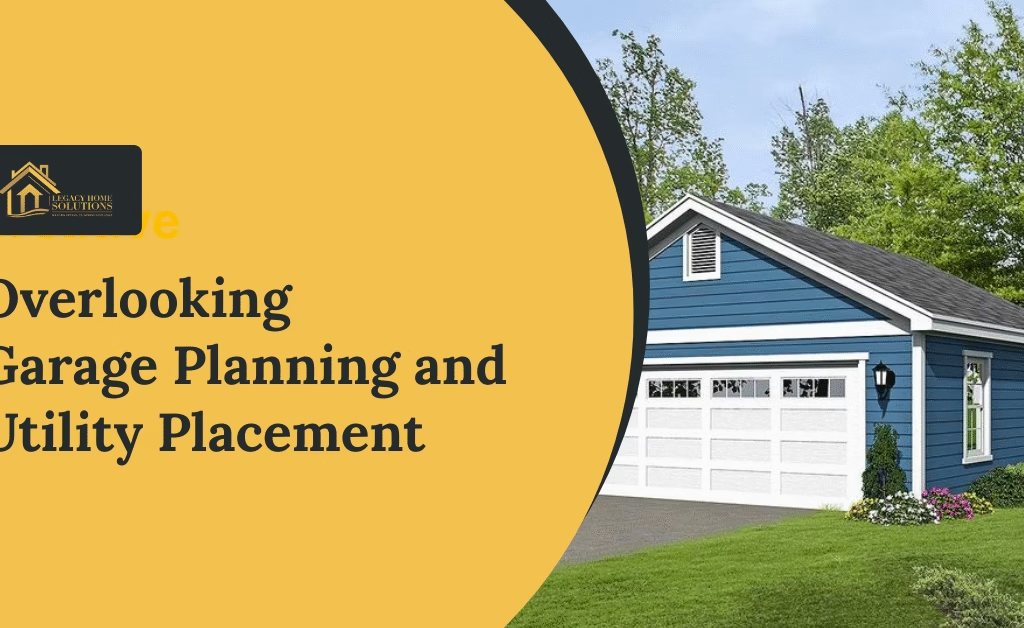
Many new homeowners treat the garage as an afterthought. But poor planning in this space often leads to long-term frustration. During garage planning, important details such as ventilation, driveway slope, and electrical wiring are sometimes ignored. A poorly positioned garage can block sunlight, limit yard space, or make it hard to expand in the future.
Similarly, incorrect utility placement, like water lines, electrical panels, or HVAC units, can cause safety hazards or expensive modifications later.
Avoid These Garage Project Errors
- Confirm that the garage floor has a proper slope for drainage.
- Plan electrical outlets and lighting before framing.
- Leave extra space for tool storage or a second vehicle.
The garage is more than a storage area. When planned correctly, it adds resale value and convenience to your daily life. Avoiding garage project errors keeps your investment practical, functional, and future-ready.
6. Skipping Inspections and Oversight
Some homeowners trust their builders completely, assuming everything will go as planned. While trust is important, consistent oversight is equally vital. Skipping routine inspections during key construction stages is one of the most overlooked home construction mistakes in Parsons.
Even the best builder benefits from a second set of eyes. Independent inspections can catch small issues, uneven walls, misaligned plumbing, or insulation gaps before they turn into serious problems.
Essential Inspection Stages
- After the foundation and framing are completed.
- Before drywall installation.
- During the electrical and plumbing setup.
- Final walkthrough before handover.
These checkpoints ensure quality and safety standards are met at every step. When you invest in professional oversight, you are investing in long-term peace of mind.
7. Underestimating Maintenance and Long-Term Planning
A new home feels perfect the day you move in, but even the best-built properties require maintenance. Homeowners often assume new construction needs little care, yet neglecting small details can lead to costly issues later.
One of the most common garage project errors involves skipping waterproof coating or sealing on concrete floors. Over time, moisture and oil spills can damage the surface and weaken structural integrity.
Long-Term Habits to Protect Your Home
- Schedule seasonal inspections for HVAC, roofing, and plumbing.
- Keep gutters and downspouts clear to prevent water buildup.
- Reseal driveways and garage floors every few years.
Taking a proactive approach keeps your home safe, efficient, and valuable for generations. Good maintenance is not a cost; it is protection for everything you have worked for.
The Role of Good Communication in Every Stage
Communication is the thread that connects every successful home build. From design to inspections, clear updates prevent confusion and wasted effort. When a builder communicates openly about schedules, materials, and weather delays, it builds trust. Conversely, silence or vague updates create frustration and fear.
Keep Communication Simple
- Schedule weekly progress check-ins.
- Document all changes or agreements.
- Share your concerns early, not after problems grow.
Every great home is built by teamwork. When you and your builder communicate clearly, mistakes shrink and confidence grows.
Balancing Aesthetics and Functionality
Another hidden pitfall is focusing too much on visual appeal without considering day-to-day use. Many first-time homeowners prioritize design features that look impressive but don’t serve a practical purpose.
In Parsons, where weather conditions vary from humid summers to cold winters, function should guide design. High ceilings, for example, might look elegant but increase heating costs. Similarly, trendy large windows can reduce energy efficiency if not positioned correctly.
Smart Balancing Tips
- Choose materials suited to the local climate.
- Prioritize comfort over temporary style trends.
- Plan lighting, insulation, and ventilation for daily comfort.
Good design is invisible; it simply works. When beauty and function align, your home feels welcoming in every season.
Understanding Local Regulations and Permits
Home construction follows strict codes to ensure safety and environmental protection. Unfortunately, skipping the permit process or misunderstanding local regulations is another major cause of delay.
In Parsons, zoning rules and neighborhood guidelines may affect building height, setbacks, or even garage placement. Missing these details can lead to fines or forced changes after construction begins.
What You Should Do
- Consult your builder before submitting plans.
- Confirm that all permits are approved before excavation.
- Keep copies of all approvals for reference.
Compliance may seem time-consuming, but it saves you from larger headaches later. The right preparation turns red tape into peace of mind.
How Experienced Builders Avoid Mistakes
Professional builders rely on experience, precision, and communication to avoid the pitfalls most homeowners face. They invest time in planning, testing, and verifying every step. A reliable builder understands that small details define big outcomes. They double-check soil conditions, inspect garage dimensions, and keep clients informed throughout the process.
Key Traits of a Reliable Builder
- Transparent pricing and clear timelines.
- Strong partnerships with local suppliers and inspectors.
- Commitment to safety and quality standards.
By hiring a trusted builder, you gain more than technical skills; you gain guidance from professionals who have seen every possible scenario in home construction services.
Planning for the Future
A well-built home adapts to your life as it changes. Future planning means considering not just your current needs, but how your family, technology, and lifestyle may evolve.
Future-Ready Ideas
- Add electrical wiring for future solar systems.
- Design a garage large enough for future upgrades or storage.
- Choose materials that last for decades, not just years.
Homes built with foresight grow with you instead of limiting you. Avoid the trap of short-term design and think ahead to create lasting comfort and value.
Conclusion
Every dream home deserves a strong foundation, smart design, and the right choices from day one. Avoiding home construction mistakes in Parsons means paying attention to the small details that matter most: soil quality, budgeting, inspections, and proper garage planning.
Each stage of construction carries lessons that protect your time, money, and happiness. Building a home is not a race; it is a partnership between your vision and your builder’s experience. With patience, clear communication, and planning, you can create a home that stands strong for generations.
When experience guides every decision, mistakes turn into opportunities for better craftsmanship and care.
Let’s Build Your Dream Home with Confidence
Partner with Legacy Home Solutions to experience reliable guidance, precision planning, and high-quality construction built on trust and expertise.
FAQs
1. How early should I involve a builder in the home design process?
Involve your builder from the start to align your design, budget, and construction plan efficiently.
2. What are the hidden costs most homeowners forget when budgeting for a new home?
Homeowners often overlook utility hookups, permits, and final site work like driveways or landscaping.
3. How can I make sure my garage design fits future needs?
Plan extra width, height, and storage for future vehicles or upgrades during early garage planning.
4. What’s the biggest mistake people make with home inspections?
The biggest mistake is skipping independent inspections that ensure safety and quality before move-in.
5. How can I verify if a builder truly offers quality home construction services?
Check their completed projects, client feedback, and transparency in communication and cost estimates.

